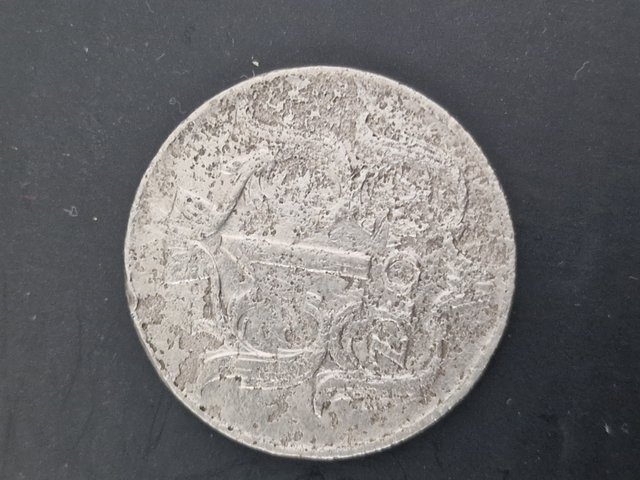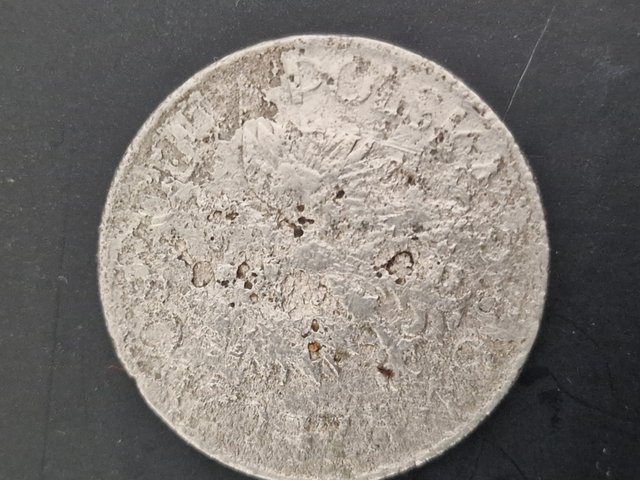1 Zloty 1920s-1930s
I came across a coin which, although badly worn and almost completely worn away, has a solid history behind it. It is a zloty coin from the Second Polish Republic, although its year of issue is difficult to read today because the surface has been badly damaged. You can still see the outline of an eagle, fragments of inscriptions and the general graphic layout, which matches the design from the 1920s and 1930s. Such coins were mainly made of nickel and were intended for everyday circulation from the very beginning, so it is no wonder that today many of them look similar – worn, full of scratches and holes, because they have passed through countless hands over several decades. The very awareness that this piece of metal could have been in use a hundred years ago, when Poland was just rebuilding itself after the partitions, gives an incredible sense of connection with that period.
An interesting fact is that the złoty as a monetary unit appeared thanks to Władysław Grabski's reform in 1924 and was the foundation of the new financial system. At that time, the złoty was supposed to be a symbol of stability and independence, a kind of sign that the young state could rely on its own economy. Coins with a face value of 1 złoty were produced in large quantities, and their simple design, with a large number and a wreath on the reverse, was intended to be legible to everyone – from city dwellers to people in villages, where every penny was saved. Today, coins in good condition can fetch really good prices, but coins like this one, worn and used, have a different value – they show everyday life, real circulation and the fact that the coin did not lie in a treasury, but participated in economic turnover.
It is also worth mentioning that zlotys from the Second Polish Republic remained in circulation long after the war, in the 1940s, when Poles' wallets contained a real mishmash of coins and banknotes. Some coins served people during the difficult years of occupation and subsequent changes, until they were finally withdrawn by successive reforms. Holding such an old and worn zloty coin in your hand, you can imagine all the stories that went with it – from shopping at a small market, to paying for train travel, to someone probably putting it aside in a piggy bank as savings. Today, it is just a piece of metal worn away by time, but for a collector and history enthusiast, it is a piece of old Poland that cannot be overestimated.


